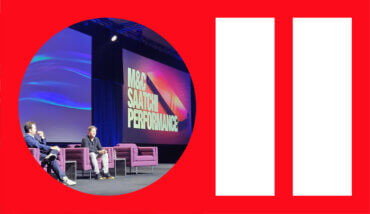An analysis by Faye Nash, Biddable Media Executive
When only 6% of users who download an app are still using it after 30 days, the question app businesses are pondering is how to get users to act once they have installed an app? App engagement campaigns are one approach, however this usually involves a multi-stage process, driving the initial installs, collecting the data, before setting up an app engagement campaign. Even after all this, it is reported that only 5% of app-users complete in-app purchases.
The Solution
Therefore, the question still stands – how can we get users to complete actions within an app and maximise that all important value beyond the install right from the get go? In July 2016, Facebook announced a new bidding feature for app install campaigns, providing advertisers with the option to optimise their bidding strategy towards in-app events.
By optimising bids towards in-app events rather than the traditional install, Facebook has provided the ability to deliver ads to people who are more likely to take a specific action within an app. On the surface this seems like a great idea; deliver ads to a more valuable audience and in return, gain higher quality installs.
Ever curious, M&C Saatchi Performance set out to investigate the impact for ourselves, from a performance marketing perspective in particular.
Case study
Hypothesis
Based on results Facebook had provided from their own case studies, our hypothesis was this:
“Bidding towards in app events will spend budgets more efficiently delivering lower CPAs”
Process
Working with a client already running successful app install campaigns, we outlined an A|B test for a selection of their campaigns encompassing a variety of targeting options. Ten campaigns were chosen at random splitting each campaign into two further campaigns with identical targeting, one optimizing to an install and the second towards the in-app purchase event.
The ads within each pair of test campaigns were identical using a slideshow ad format and ran for a one month period to allow enough spend for significant data.
Throughout the test period, each set of campaigns were monitored closely to ensure even spend and thus comparable data for analysis.
Results
Optimizing towards in-app events proved very successful for our client’s campaigns:
- 82% increase in In-App purchases
- 42% decrease in cost per purchase
- 87% increase in CVR (Conversation Ratio)
- Optimizing towards the in-app purchase event also delivered an 18% lower cost per install
This insight has provided us with the ability to deliver more valuable installs to clients and drive higher in-app purchase volume at a significantly lower cost per purchase.
One tip for success is to allow enough time to find the right bid for the in-app event. It may take a few adjustments at the beginning of the campaign to find the best bid range for the algorithm to work with.
Conclusion and recommendations
Having investigated the impact that in-app event optimisation would have on campaigns, we can agree that the feature is a highly useful tool to aid actions beyond the install.
Even if your goal is to drive downloads only, don’t discount trying out the bidding feature. By optimising towards an in-app event, the algorithm should have more data touch points to work with. If the algorithm is optimising towards people within your target audience who are more likely to carry out an in-app action, then these people should have more of an affinity to download an app in the first place. This could potentially lead to cheaper installs.
Clients have a number of differing product offerings so we would recommend trying the feature for yourself, testing out as many in-app events as possible to find what works best for you. Ultimately, we believe that in-app optimisation is a great tool and one which we will continue to use in the future.
See more of our work in action here

